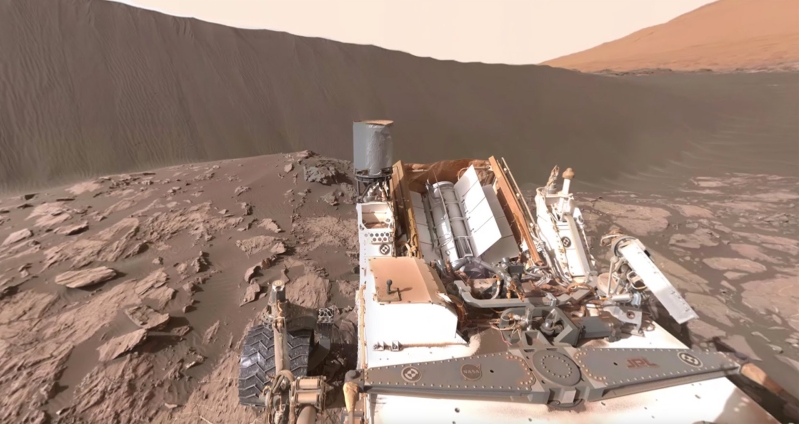
Science fans will finally experience what it's like living on Mars' surface. On Monday, NASA's Jet Propulsion Laboratory has released a new 360 degrees video of the Red Planet, allowing viewers to drag and drop on the clip to see the stunning environment of the planet.
The immersive video was created by stitching together the images taken by the Mars Curiosity Rover on December 18th, 2015. The rover captured the stunning images using its Mast Camera during 1,197th sol (a Martian day) of its mission. A day on Mars is about 40 minutes longer than here on Earth.
The best way to see the video is though YouTube's mobile phone app. Smartphone users can see the high-quality 360-degree look of Mars by just moving their gadgets around.
The scene includes a view of the downwind face of the Namib Dune, which is roughly 23 feet away from the rover. Estimates from the space agency show the downwind face of the dune rises at an inclination of about 28 degrees to a height of roughly 16 feet (5 meters) above the base.
Aside from the dune, Mount Sharp can also be seen in the 360°-video. The mountain appears to be an enormous mound of eroded sedimentary rocks. It rises 18,000 ft above the northern crater floor and 15,000 ft above the southern crater floor, according to estimates from NASA. Mount Sharp's sediments may have been laid down over an interval of 2 billion years.
The first edition of the video was released on January 30th, but the there were problems on the stitching of images, resulting in a disoriented 360-degree panoramic video. The recently released video is a huge improvement from the first and gives a cleaner virtual Mars tour.
Malin Space Science Systems, San Diego operates the cameras of Mars Curiosity Rover. In total, the rover has 17 cameras, which are used for navigation and scientific analysis. For science investigations of the rover, NASA's Jet Propulsion Laboratory oversees it.
Mars Curiosity rover, which the largest rover on the Red planet, landed on Mars on August 6th, 2012. The rover was built to investigate the surface of Mars to know if the planet is capable of supporting life.
Last year, Curiosity discovered an evidence of two distinctive wet periods in Mars' history. The proof of water in the planet can help scientists to determine if Mars currently supports, or has ever supported, life formation.







